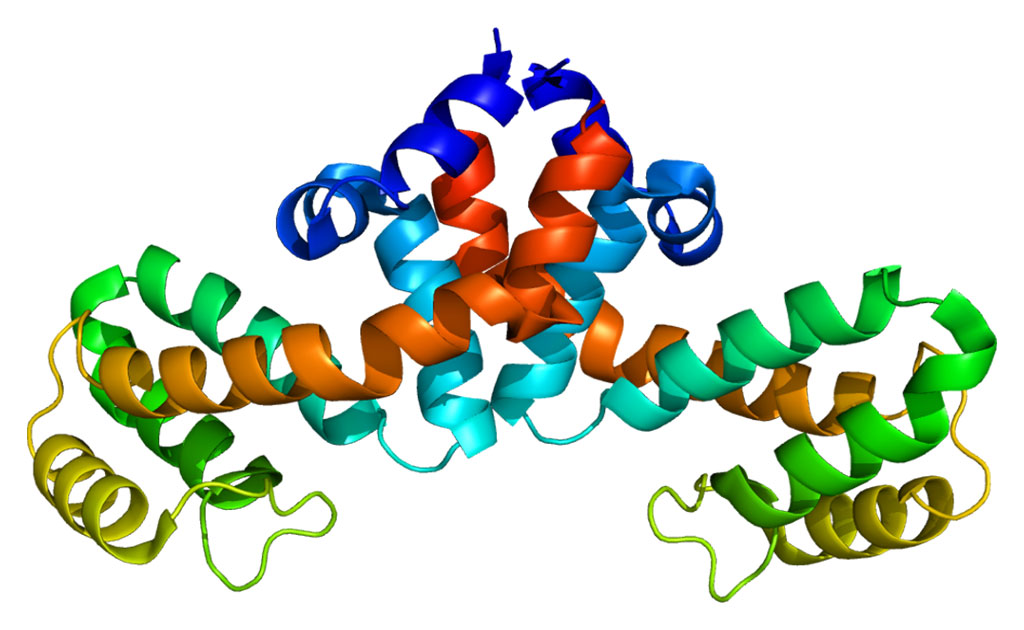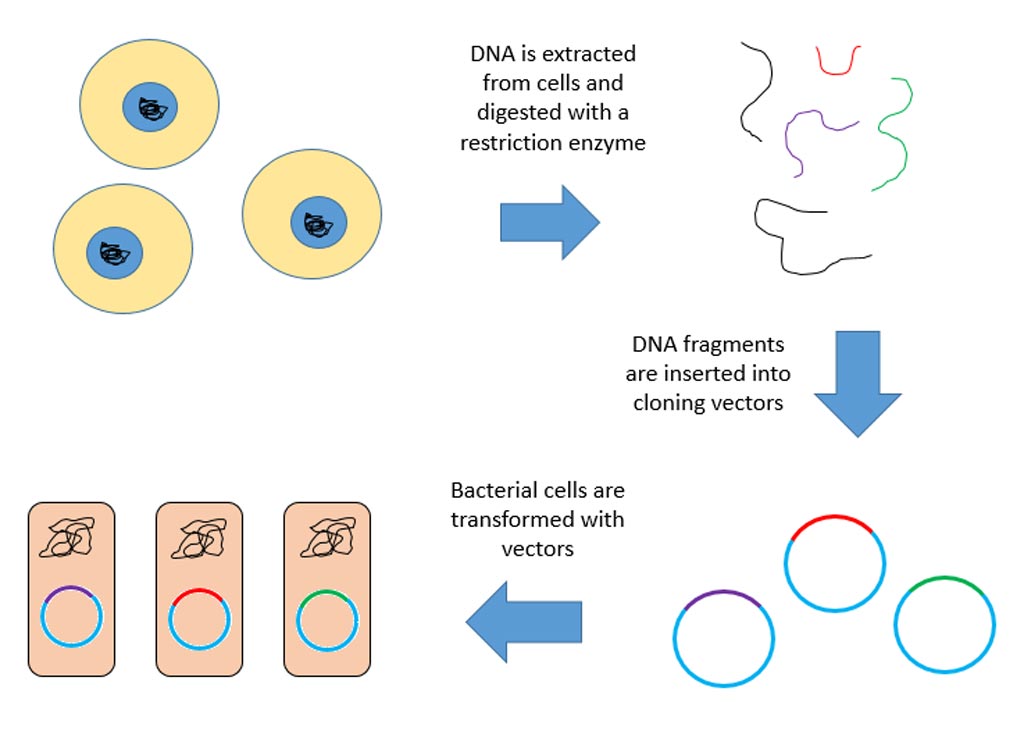Enzyme Inhibitor Blocks Respiratory Virus Replication
By LabMedica International staff writers
Posted on 30 May 2018
A recently crafted drug molecule has proven to be a potential candidate for treatment of the viruses responsible for the common cold and other respiratory diseases.Posted on 30 May 2018
Rhinoviruses (RVs) are the pathogens most often responsible for the common cold, and are a frequent cause of complications in asthma, chronic obstructive pulmonary disease (COPD), and cystic fibrosis.

Image: The novel molecule IMP-1088 (yellow) blocks human NMT (blue), a protein essential for the cold virus to assemble the geometric capsid shell, which encloses its RNA genome (green) (Photo courtesy of Imperial College London).
In an effort to combat respiratory viruses, investigators at Imperial College London (United Kingdom) synthesized the compound IMP-1088, a picomolar dual inhibitor of the human enzymes N-myristoyltransferases NMT1 and NMT2. N-myristoyltransferase catalyzes the transfer of myristate - a rare 14-carbon saturated fatty acid, which is attached by an amide linkage to the N-terminal glycine residue of cellular and viral proteins with diverse functions - from CoA to proteins.
Crystal structures and other evidence had revealed that two inhibitors, which the investigators had identified early in their studies, targeted different sites on the human enzymes. They used a fragment-based drug design approach to combine the two inhibitors and structure-guided design to optimize the combination agent’s drug properties.
The investigators reported in the May 14, 2018, online edition of the journal Nature Chemistry that that inhibition of the myristoylation of a specific virus-encoded protein (VP0) by IMP-1088 potently blocked a key step in viral capsid assembly, to deliver a low nanomolar antiviral activity against multiple RV strains, poliovirus, and foot and-mouth disease virus. The compound was found to be nontoxic to cell cultures.
"The common cold is an inconvenience for most of us, but can cause serious complications in people with conditions like asthma and COPD. A drug like this could be extremely beneficial if given early in infection, and we are working on making a version that could be inhaled, so that it gets to the lungs quickly," said senior author Dr. Edward W. Tate, professor of chemical biology at Imperial College London.
Related Links:
Imperial College London













